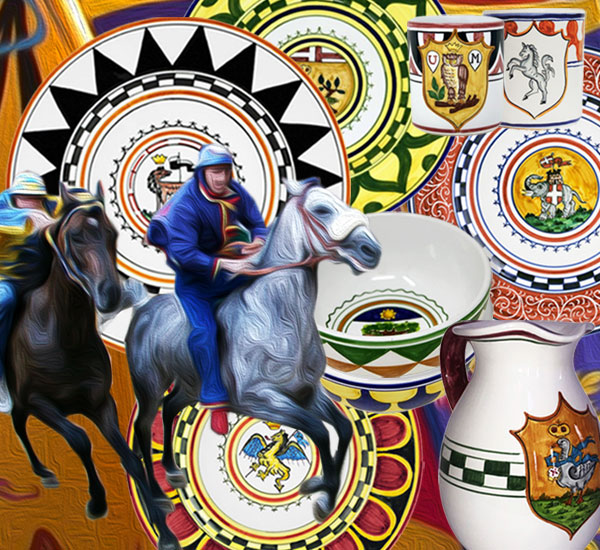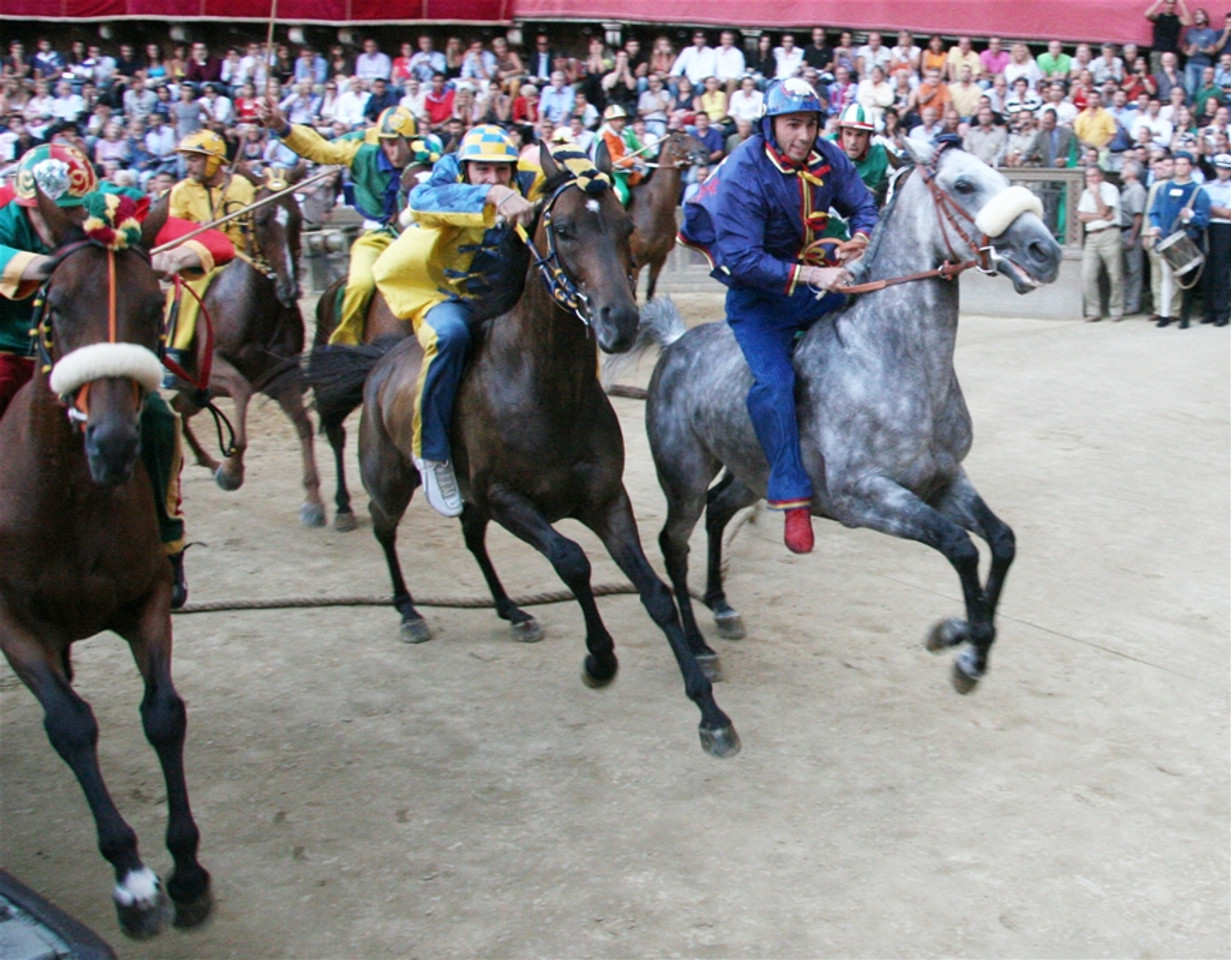Palio di Siena - The Most Insane Horserace
Palio di Siena - The Most Insane Horserace
(Photo Credit: Wikipedia Commons)
Siena is by far one of my favorite Italian towns, a captivating medieval city in Tuscany, renowned for its well-preserved Gothic architecture, vibrant cultural scene, and the thrilling Palio. Its historic center, a UNESCO World Heritage site, offers a unique blend of old-world charm and modern excitement, making it a must-visit destination. If you happen to be traveling to Italy during the summer, do try and plan your trip around the Palio di Siena a bareback horse race that occurs every July 2 and August 16.
Dating back to 1633, The Palio di Siena is one of Tuscany’s most awaited summer events for locals and tourists alike. Italy's most famous horse race takes place twice a year in the Piazza del Campo “Il Campo”, Siena’s shell-shaped town square which is transformed into a racetrack. The Palio is a competition between the city’s districts, which are called contrade. In the Middle Ages, Siena was partitioned into seventeen neighborhoods. These neighborhoods developed a tradition of fierce rivalry that continues to this day. Each person who lives in Siena belongs to a contrada and they participates in events year round. The Contradas each have their own government, oratory, coat of arms, festivities, church and patron saint.
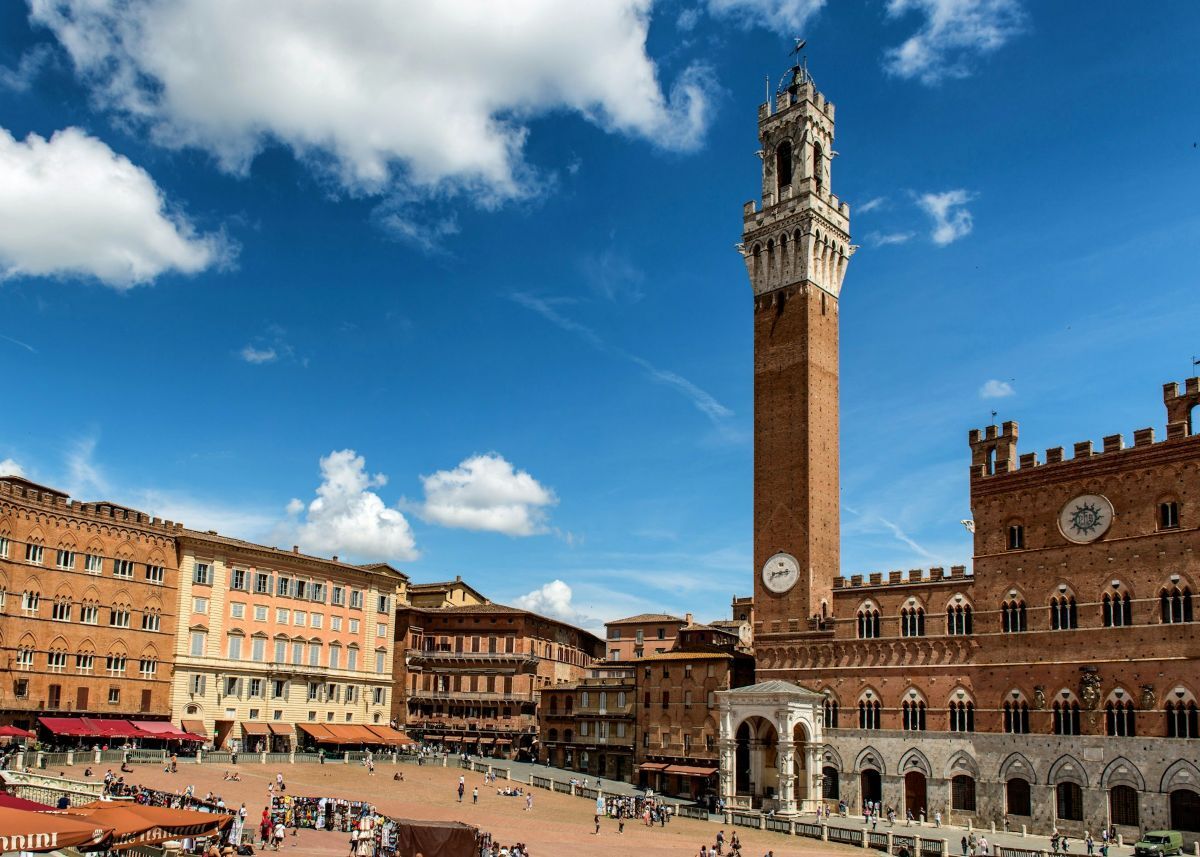
Photo by Wolfgang Weiser on Unsplash
The Palio di Siena is held in honor of the Virgin Mary. Siena’s deep devotion to the Virgin Mary dates to 1260 following the Battle of Montaperti, a battle between the Sienese and the Florentines where the Sienese made a vow of devotion to the Virgin Mary if she would only pray for their victory. Siena miraculously won the battle and to this day the city still has a strong connection to the Virgin. The Palio held on July 2 is in commemoration of a miraculous apparition of the Virgin Mary near the house of local nobleman Provenzano Salvani. The August Palio celebrates the Madonna dell'Assunta, who is credited with protecting the Sienese militia during the Battle of Montaperti.
Palio festivities begin on the morning of June 29 with warm up races until the actual race on July 2 and again on August 13 for the August 16th race. Only 10 of the 17 contrade (city districts) are chosen to compete in each race. The seven contrade who did not participate in the last Palio are automatically chosen, then the remaining three spots are filled by a random draw.
The first day is the “tratta”, the drawing of lots when horses are assigned to each Contrada. Purebred horses are not permitted in the race. All horses are mixed breeds. Horses for the Palio di Siena are selected for the race through a combination of trials, veterinary examinations, and a lottery system, with the final ten horses chosen by the Captains of the participating Contrade. A lottery system is used to randomly assign each of the ten horses to each one of the participating Contrade which appoints their own jockey.
On this first day, the first of six trials is held. The trials proceed in nearly full Palio conditions: horses emerge from left entrance (inner courtyard) of Palazzo Pubblico at 7:45pm, trot to the starting line (mossa) and race three laps around the Campo. Jockeys are still testing their horses, so winning does not matter yet. The following day additional trials are held.
On the eve of the Palio, an additional trial is held, which is essentially the dress rehearsal for the Palio. This is by far the most festive of the trials. It is preceded by an appearance by the Carabinieri, mounted police, which gallop around the track as pre-trial entertainment. After the trial race, all ten contrade which are participating in the Palio hold an elaborate outdoor celebration dinner.
Excitement looms through the air as the actual day of the Palio di Siena finally arrives. The day begins at 7:45 am with The Mass of the Jockeys (La Messa del Fantino) where the archbishop of Siena’s provides a mass for all ten jockeys in the Capella di Piazza in front of Palazzo Pubblico. Later in the afternoon, a priest from each contrade blesses their jockey and horse. When the blessing is concluded, the priest yells “Va, e torna vincitore!” (Go, and come back victorious). A loud contrada cheer usually follows.
Then the Alfieri (flag bearers) from each Contrada marches to the Duomo to participate in a colorful two-hour pageant called the Corteo Storico. They are joined by hundreds of people dressed in elaborate medieval costumes, carrying and waving colorful banners and flags. Some are on horseback; others are on floats or chariots pulled by oxen parading through the town until they finally arrive at the Piazza del Campo.
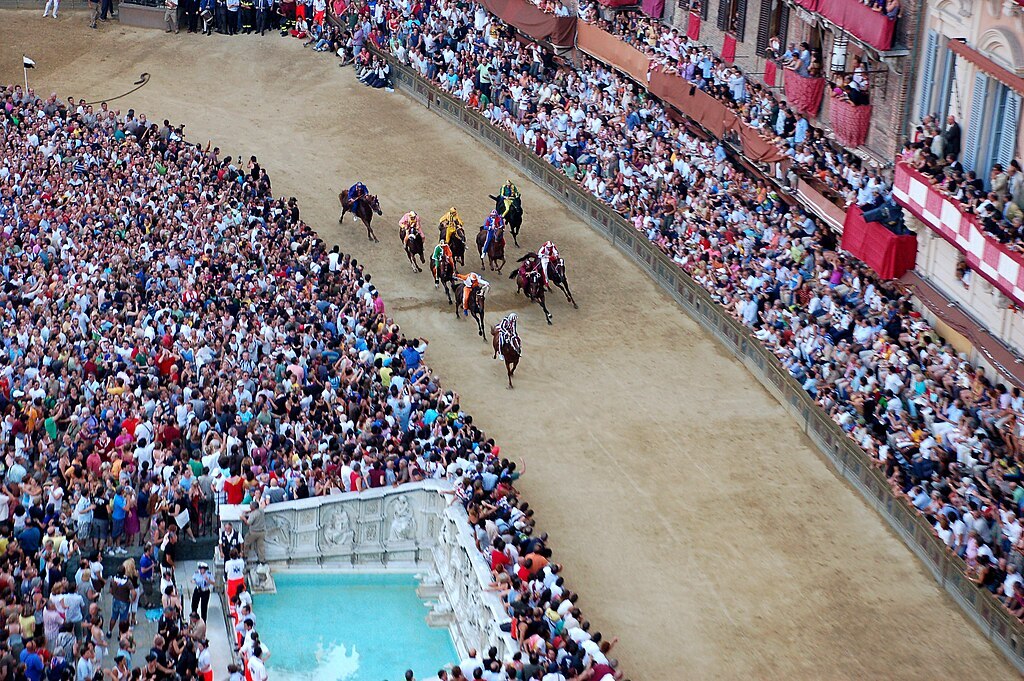
(Photo Credit: Wikipedia Commons)
Late afternoon, a loud firecracker signals the entrance of the horses into the piazza. As they process out, each jockeys receives a whip made out of ox sinew which they can use to prod their horse or to irritate other opponents in the race. Jockeys are not permitted to touch the reins of another horse, but they can do their darndest to distract the other horses.
The race starts in the Mossa, a small area defined by two long pieces of rope. While they wait, the jockeys taunt each other and offer each other bribes not to win while the horses try to break out of the Mossa. The contrade are called in the order in which they were drawn; the first nine take their assigned positions between the two ropes. The tenth horse enters the area at a running gallop to start the race.
Once the rope drops, Il Palio is a quick but thrilling ninety second spectacle, with narrow hairpin curves, collisions, and intense noise from thousands of screaming spectators.
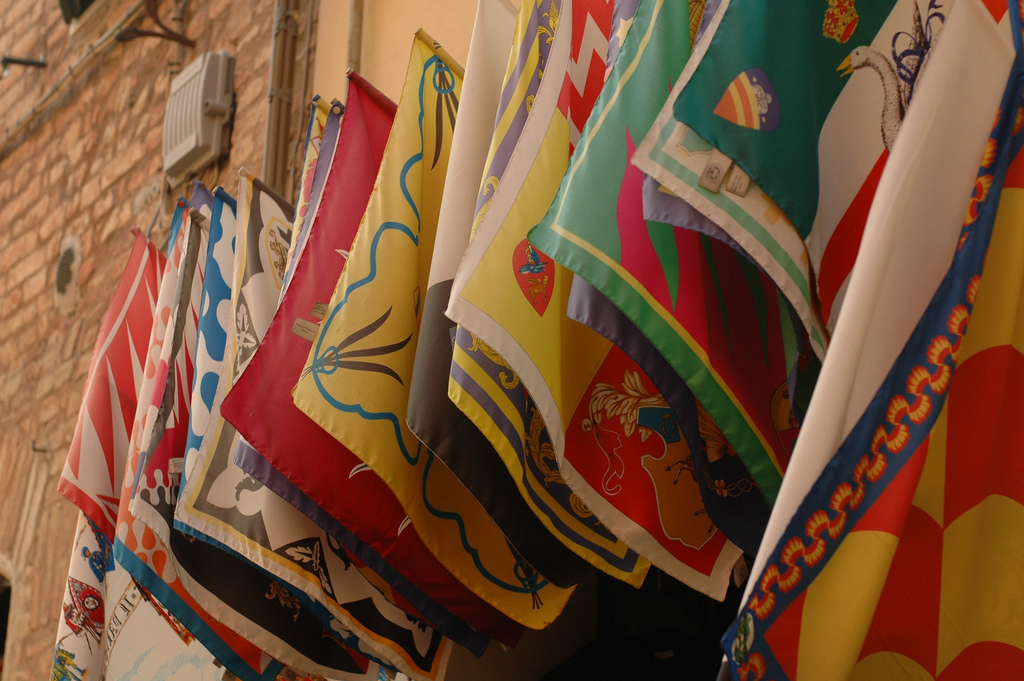
(Photo Credit: Daniele Marcucci from Firenze, Italia, Wikimedia Commons)
The first horse that crosses the finish line – even if the jockey fell off – is the winner. The Palio prize is the Drappellone, meaning large drape, a large painted silk canvas with the image of the Virgin Mary. It is created by a different artist each year and displayed in the winning contrada’s museum. The winning contrada – bearing the Drappellone – is whisked off to a church for the Te Deum (prayer of thanks). Though usually revered in competitions, the second-place jockey is not honored but held in more contempt than the jockey who came in last for he should have won.
With the Palio over, the celebrations begin - dancing, singing, feasting and drinking and more drinking! People from the victorious contrada suck on pacifiers and drink wine from baby bottles to symbolize rebirth.
The Palio di Siena is more than a horse race to the people of Sinea, it’s a passion for the Sienese people and part of their lives celebrating Sienese culture and heritage, promoting a strong sense of community and pride.
